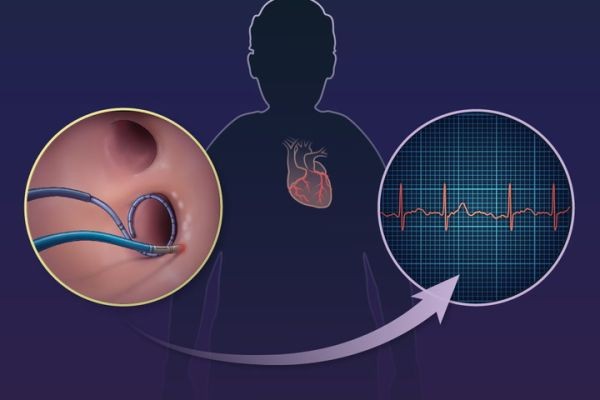The Atrial Fibrillation (Afib) Market is undergoing significant transformation, driven by rising global prevalence of cardiovascular disorders, innovative treatment advancements, and increasing awareness of early detection. With atrial fibrillation being the most common sustained cardiac arrhythmia worldwide, its economic, clinical, and social impact is substantial, creating both challenges and opportunities for healthcare providers, pharmaceutical companies, and medical device manufacturers.
Growing Burden of Atrial Fibrillation
Atrial fibrillation affects millions of people globally, with incidence rates rising due to aging populations, sedentary lifestyles, obesity, hypertension, and diabetes. The condition increases the risk of stroke, heart failure, and mortality, contributing to high healthcare costs. According to clinical data, individuals with Afib have a fivefold higher risk of stroke, making timely diagnosis and treatment essential. This escalating burden has created strong demand for effective therapies, monitoring technologies, and preventive strategies, which continues to expand the Afib market size.
Key Market Drivers
-
Aging Population and Rising Disease Prevalence
The risk of Afib increases with age, and as global life expectancy rises, more patients are being diagnosed. Countries with large elderly populations, such as Japan, Germany, and Italy, are experiencing particularly high demand for advanced treatment options. -
Technological Innovations in Treatment
Catheter ablation, minimally invasive surgical procedures, and next-generation antiarrhythmic drugs are improving outcomes and patient safety. Advanced mapping technologies and robotic-assisted interventions are also enhancing procedural success rates. -
Increasing Focus on Preventive Care and Early Detection
Wearable devices and mobile health applications are making it easier to monitor irregular heart rhythms outside of clinical settings. The widespread adoption of smartwatches with ECG capabilities is democratizing Afib detection and raising awareness among patients. -
Healthcare Expenditure and Policy Support
Governments and insurers are emphasizing preventive cardiology, providing reimbursement for Afib treatments, and supporting awareness campaigns. These initiatives are driving higher adoption of advanced therapies.
Market Segmentation
The Afib market can be segmented by treatment type, end user, and region:
-
By Treatment Type:
-
Pharmacological Therapies: Anticoagulants (warfarin, DOACs), antiarrhythmics, and rate-control drugs remain foundational.
-
Non-Pharmacological Treatments: Catheter ablation, radiofrequency ablation, cryoablation, and surgical procedures are rapidly growing segments.
-
Devices: Pacemakers and left atrial appendage closure (LAAC) devices are gaining momentum in patients who cannot tolerate long-term anticoagulation.
-
-
By End User:
-
Hospitals remain the largest consumers due to surgical and interventional procedures.
-
Ambulatory surgical centers and specialty cardiac clinics are expanding as minimally invasive techniques become more common.
-
-
By Region:
-
North America leads with strong adoption of advanced therapies and high healthcare expenditure.
-
Europe is notable for its aging population and supportive reimbursement policies.
-
Asia-Pacific is the fastest-growing market, fueled by rising healthcare infrastructure, increasing cardiovascular disease burden, and growing awareness.
-
Competitive Landscape
The Afib market is highly competitive, with players focusing on innovation, product approvals, and strategic collaborations. Pharmaceutical giants continue to expand their portfolios with next-generation anticoagulants, while medical device companies are investing heavily in ablation systems and implantable devices. Partnerships between hospitals, research institutions, and technology providers are accelerating the development of AI-driven diagnostic tools and digital health solutions for Afib management.
Emerging Trends Shaping the Future
-
Integration of Artificial Intelligence (AI): AI algorithms are being used for predictive diagnostics, enabling earlier intervention and reducing the risk of stroke.
-
Personalized Medicine: Genomic insights and biomarkers are paving the way for individualized drug therapies tailored to patient profiles.
-
Remote Monitoring and Telehealth: Post-pandemic healthcare systems have embraced telehealth, which is proving highly beneficial for continuous Afib patient management.
-
Combination Therapies: Use of dual approaches, such as ablation coupled with pharmacotherapy, is improving long-term outcomes.
Opportunities and Challenges
-
Opportunities: Expanding patient awareness, rise of digital health platforms, and untapped markets in emerging economies provide significant growth prospects. Additionally, increasing investment in R&D offers potential breakthroughs in curative therapies.
-
Challenges: High procedure costs, risk of complications from invasive treatments, and limited access in low-income regions remain barriers. Furthermore, anticoagulant therapy adherence continues to be a clinical concern.
Conclusion
The atrial fibrillation (Afib) market is at a pivotal juncture, with technological advancements, policy support, and patient-centered care driving expansion. As early detection tools, minimally invasive therapies, and digital health platforms continue to evolve, stakeholders are well-positioned to capitalize on opportunities while addressing key challenges. With its growing global burden and expanding treatment landscape, the Afib market will remain a critical focus area for healthcare innovation and investment over the coming decade.

